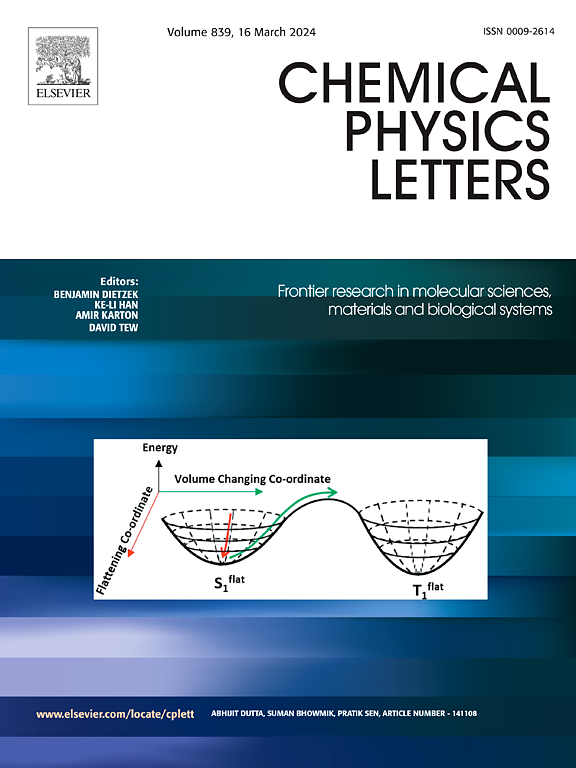一种可解释的机器学习数据挖掘,以产生具有尽可能低的HOMO-LUMO间隙的有机染料的新有机供体
IF 2.8
3区 化学
Q3 CHEMISTRY, PHYSICAL
引用次数: 0
摘要
本文介绍了一种可解释的机器学习方法,用于识别具有最小化HOMO-LUMO间隙的染料的新有机供体。创建了一个数据集,使用PSI4量子化学方法计算了HOMO-LUMO间隙。一个R2为0.91的随机森林模型被训练用于预测。主要特性包括LabuteASA、Chi0v和Chi1n。测定结构活动似然指数(SALI)得分,最高可达15分。K-Fold交叉验证验证了模型的稳健性。最终,预计有1000个潜在的有机供体,为设计高性能有机染料和加速新材料的发现提供了宝贵的资源。本文章由计算机程序翻译,如有差异,请以英文原文为准。

An explainable machine learning data mining to generate new organic donors of organic dyes with lowest possible HOMO-LUMO gaps
This manuscript introduces an explainable machine learning approach for identifying new organic donors of dyes with minimized HOMO-LUMO gaps. A dataset was created, with HOMO-LUMO gaps calculated using PSI4 quantum chemical methods. A random forest model, achieving an R2 of 0.91, was trained for predictions. Key features included LabuteASA, Chi0v, and Chi1n. Structure Activity Likelihood Index (SALI) scores were determined, reaching up to 15. K-Fold cross-validation validated the model's robustness. Ultimately, 1000 potential organic donors were predicted, providing a valuable resource for designing high-performance organic dyes and accelerating the discovery of novel materials.
求助全文
通过发布文献求助,成功后即可免费获取论文全文。
去求助
来源期刊

Chemical Physics Letters
化学-物理:原子、分子和化学物理
CiteScore
5.70
自引率
3.60%
发文量
798
审稿时长
33 days
期刊介绍:
Chemical Physics Letters has an open access mirror journal, Chemical Physics Letters: X, sharing the same aims and scope, editorial team, submission system and rigorous peer review.
Chemical Physics Letters publishes brief reports on molecules, interfaces, condensed phases, nanomaterials and nanostructures, polymers, biomolecular systems, and energy conversion and storage.
Criteria for publication are quality, urgency and impact. Further, experimental results reported in the journal have direct relevance for theory, and theoretical developments or non-routine computations relate directly to experiment. Manuscripts must satisfy these criteria and should not be minor extensions of previous work.
 求助内容:
求助内容: 应助结果提醒方式:
应助结果提醒方式:


